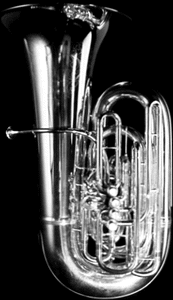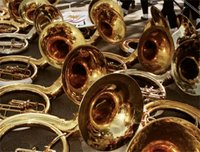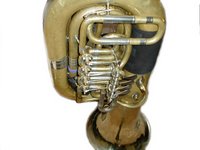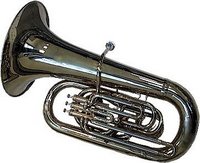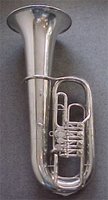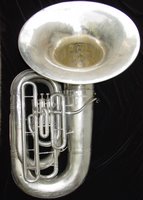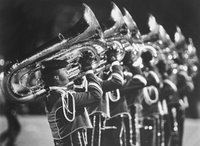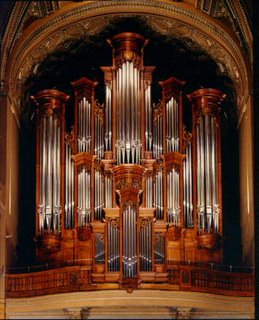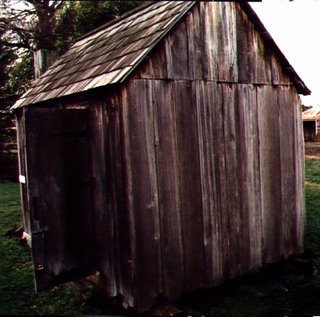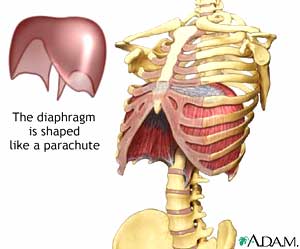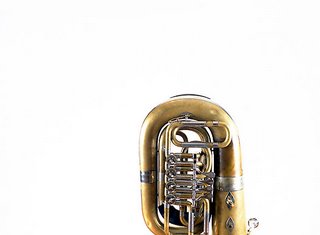Operations and Balance
 Often I hear the question: “Will doubling on other brass instruments ruin my embouchure?”
Often I hear the question: “Will doubling on other brass instruments ruin my embouchure?”This one is easy…
The answer is emphatically:
NO.
The human body is an amazingly adaptable machine.
The embouchure is largely and singularly made up of the orbicularis oris muscle which is the sphincter muscle around the mouth. It is however, not a simple single sphincter muscle, rather it is a convergence of a multitutde of other facial muscles that are interwoven and interwined into and through the orbicularis oris.
The muscles in the embouchure are directly attached to the brain through a single cranial nerve, nerve number VII, which runs down the left side of the head and face.
Now, the specificity of the musculature is not necessarily important for the brass player to know. However it IS imperative to know is that they are indeed JUST muscles. It is most important we understand the basics of how muscles in our body are controlled and respond.
Being the tech geek I am, let’s put it in techie terms:
Muscles themselves are OUTPUT peripherals -- nothing more than tools that are controlled by the main CPU, for a specific function, to create motion energy. They have no thought or control of their own.
Nerves are our INPUT mechanisms. Many different kinds of nerves are interspersed throughout the entire body and are the only way we get any type of information.
Our brain, obviously, is our CPU. It processes the input information and determines, based on protocols, how to manipulate the output peripherals.
As a brass player, it’s crucial to know what nerves we should or should not use to get “accurate” feedback.
The major question becomes What do nerves (or input) do we use ABOVE ALL to evaluate the ENTIRE process of music?
Answer: The ears! ...the nerves that process sound.
 Practically ALL feedback while playing should come from the ears and the ears ONLY! …as the ears are where it counts. Much brass teaching over-employs the use of the facial, mouth, skin, and other "physical" nerves to get the feedback needed govern the process of music making. This is absolutely an inefficient method and this "feel" type of nerve feedback should be considered “secondary” to the music making process.
Practically ALL feedback while playing should come from the ears and the ears ONLY! …as the ears are where it counts. Much brass teaching over-employs the use of the facial, mouth, skin, and other "physical" nerves to get the feedback needed govern the process of music making. This is absolutely an inefficient method and this "feel" type of nerve feedback should be considered “secondary” to the music making process.(it does not matter how it "feels"!)
Our EARS and our hearing are FAR FAR more sensitive and accurate than the "feel" nerves in our skin and muscles. Therefore it makes most sense to use our ears as the PRIMARY method of feedback to the brain.
So, in a way, let the EARS control the EMBOUCHURE!!
Don't play by "feel", rather play by what YOU want the music to sound like!
----
Result ALWAYS rules Process!!
In this case, the result is the music, and a singular aspect of our process is embouchure, which is governed by our brain. NEVER vice versa.
How does this apply to our original question of switching brass instrument sizes?
Playing different of instruments will be dependent on slightly different process and manipulation of the embouchure.
As we go through a singular process, the brain “gets used” to it. Obviously, the more we go through something, the more natural (habitual) it becomes.
When we switch instruments, the facial muscles may argue a bit at first. This is normal… but is important to understand it is not really about the facial muscles themselves, it is about the brain being less used to controlling them in a certain manner.
So, what you need to do is give the brain TIME to make the adjustment. Switching may take time, as in weeks… to reestablish habits from the other instrument.
We are creatures of habit. Our brain likes it that way, ESPECIALLY as it relates to mechanical / motor functions.
You are never going to “ruin” your embouchure. You may make it awkward for a short temporary amount of time, but that’s ok.
Above all, remember that motor skills take time. And, time takes patience. And musical intent must govern the actions of our body, not the other way around.






